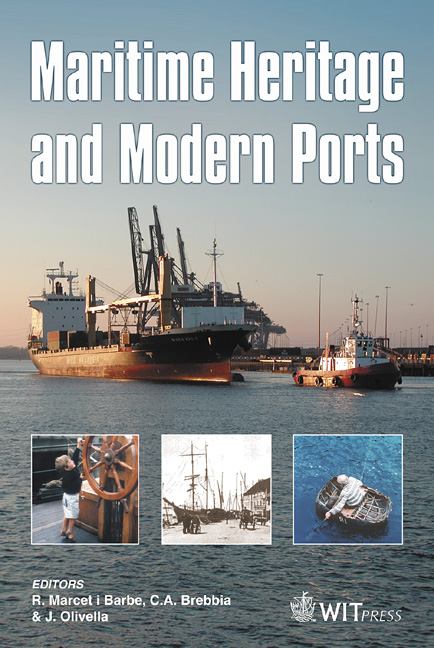Berthing Characteristics And The Behaviour Of The Oil Terminal Of Leixões Harbour, Portugal
Price
Free (open access)
Transaction
Volume
79
Pages
12
Published
2005
Size
1,754 kb
Paper DOI
10.2495/MH050451
Copyright
WIT Press
Author(s)
F. Veloso-Gomes, F. Taveira-Pinto, P. Rosa-Santos, E. Brogueira-Dias & H. Guedes-Lopes
Abstract
Larger depth requirements for large tankers together with security reasons necessitate the establishment of oil terminals located in areas more exposed to adverse sea state conditions, conditioning terminal operations’ efficiency and putting severe demands on fender and mooring systems. This paper describes the characteristics and behaviour of the berth \“A” of Leixões Harbour oil terminal which is, from the three berths that compose the oil terminal, the one that has the most significant hydrodynamic and operational problems, due to its exposed location despite the adjacent breakwater. The present conditions of berth \“A” causes an obvious cost, as well as environmental and safety risks to the port authority, and for that reason this berth has been the subject of studies with the aim of improving its operational and security conditions. This paper will also present an overall overview of some conclusions of a recent study that has been carried out. Keywords: operational conditions, oil terminal, breakwater overtopping, berth. 1 Introduction Tranquillity conditions in the surrounding area of berths are essential to efficient and secure loading/unloading ship operations. In the external areas of harbours, these conditions are difficult to achieve and therefore terminals are more exposed to adverse sea state conditions. Breakwaters play an important role in the reduction of wave conditions inside harbour basins although their action could be ineffective to long period waves. However, these structures are designed for an acceptable limit of wave
Keywords
operational conditions, oil terminal, breakwater overtopping, berth.





